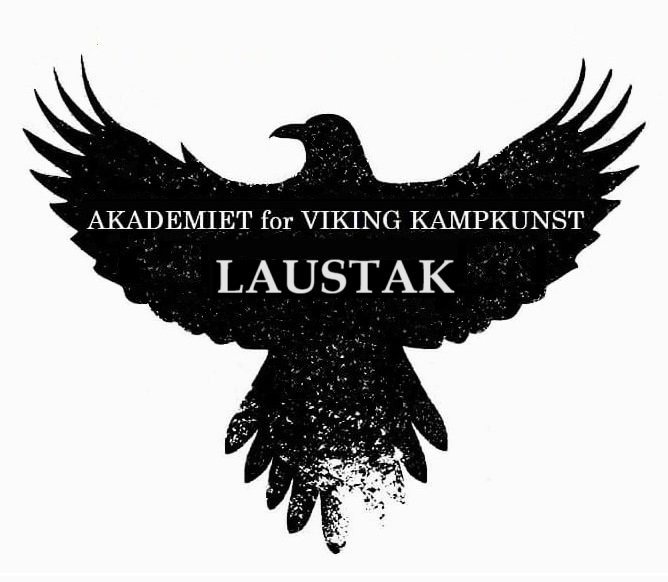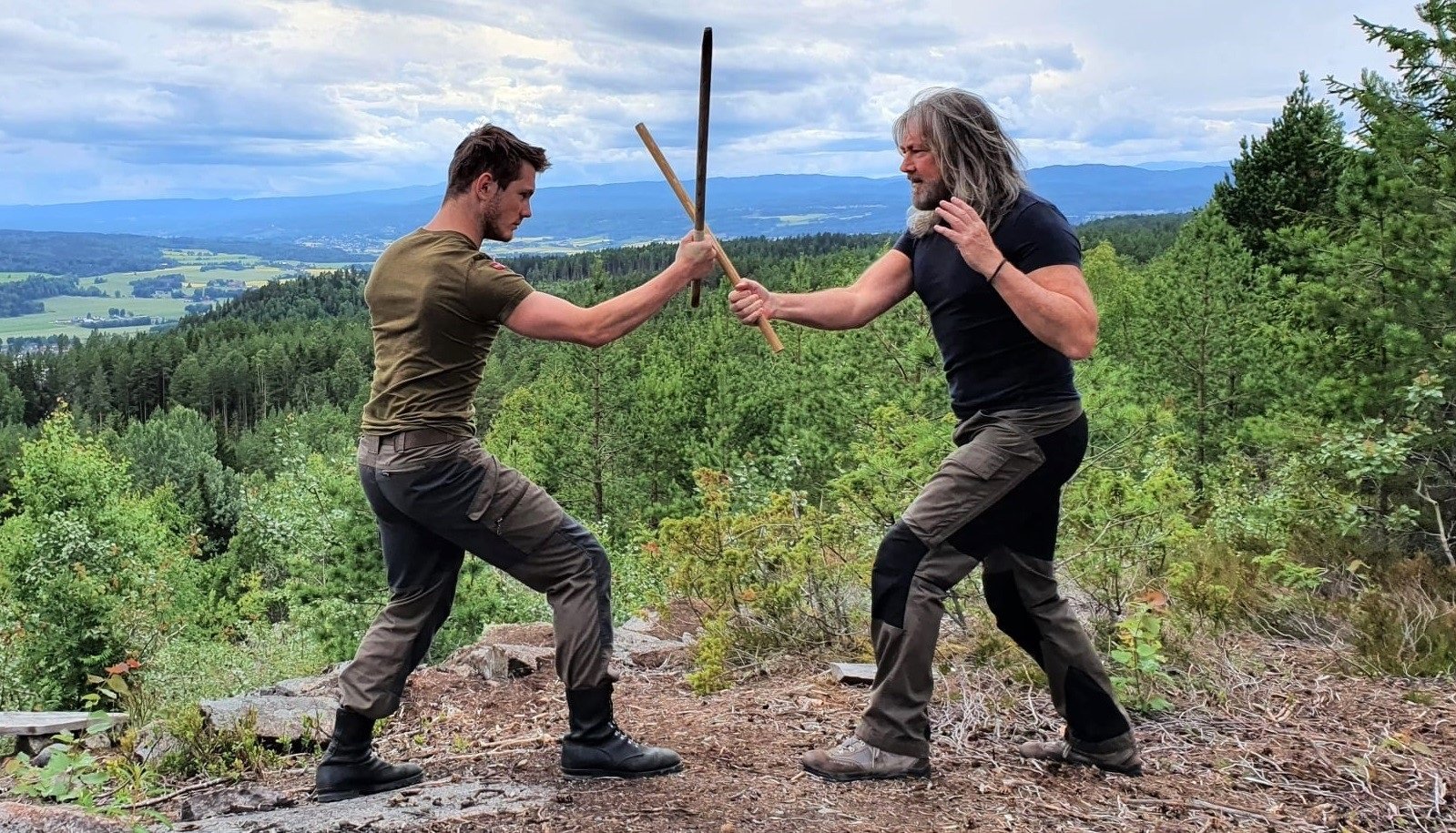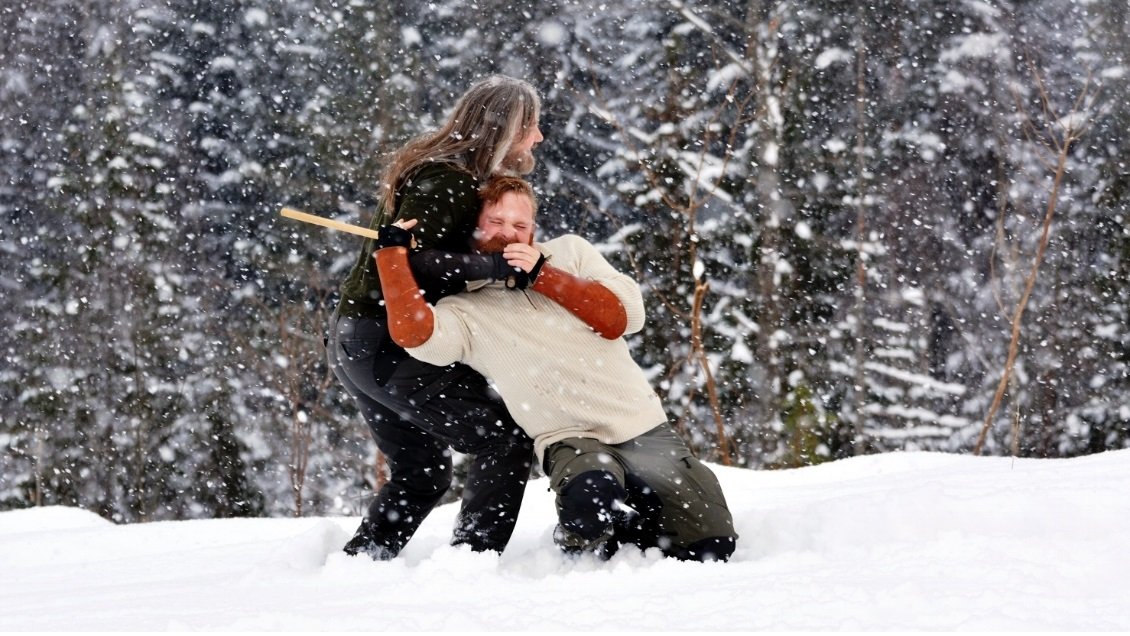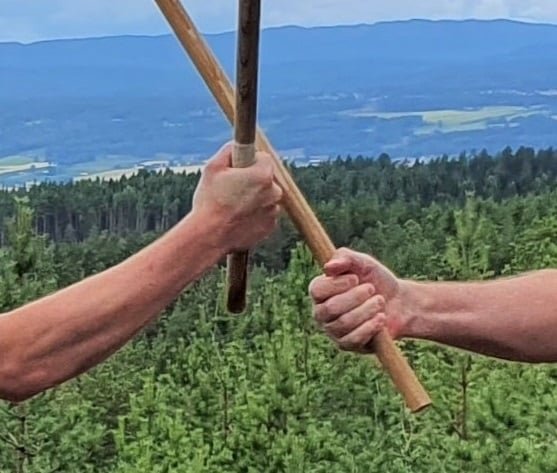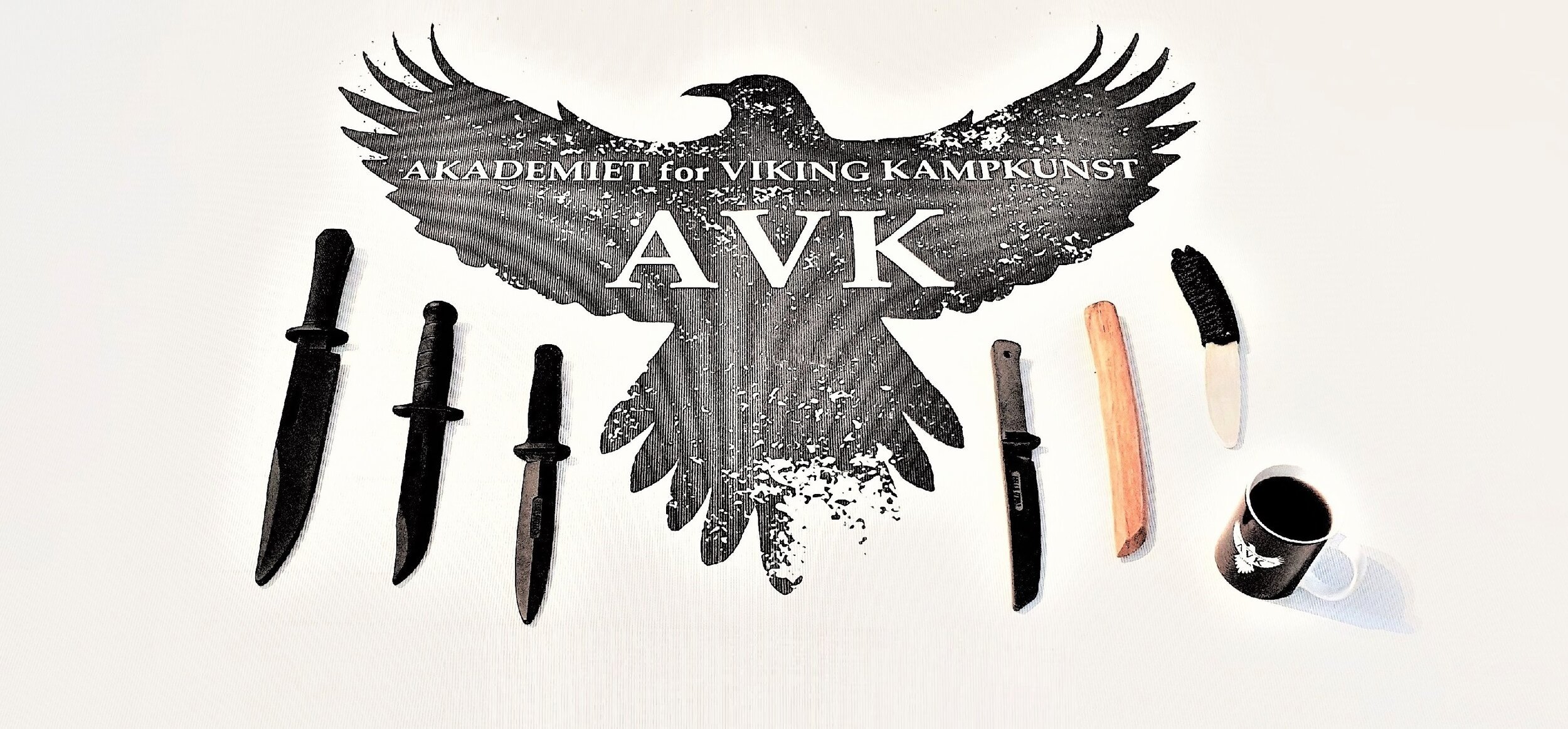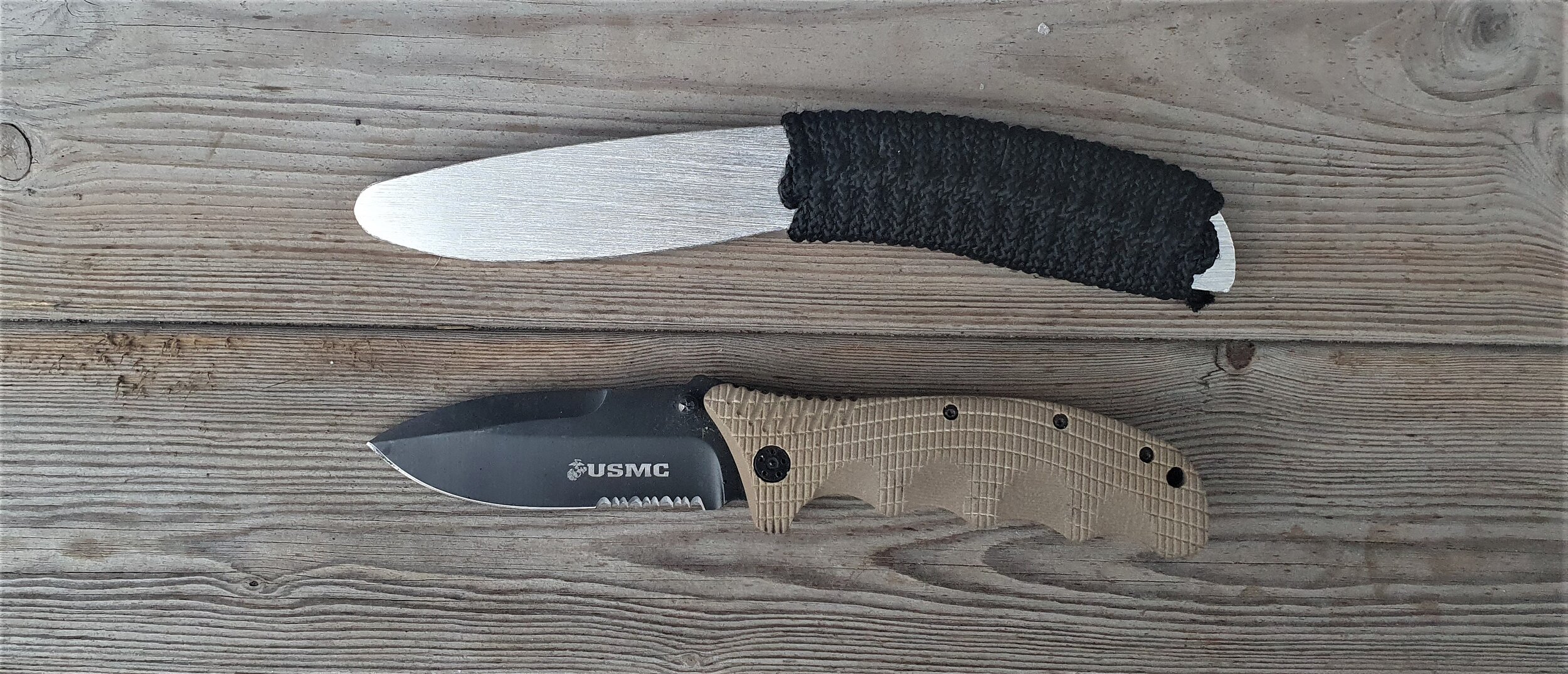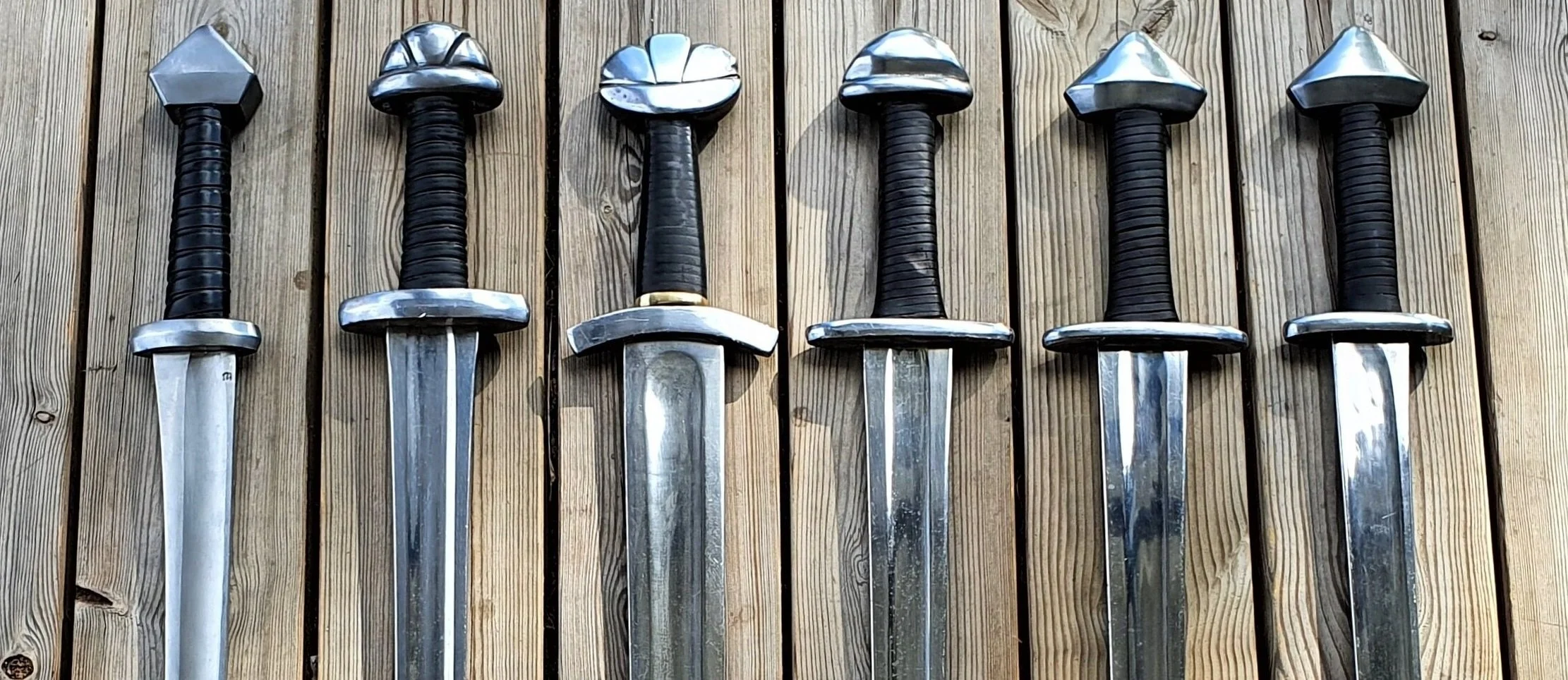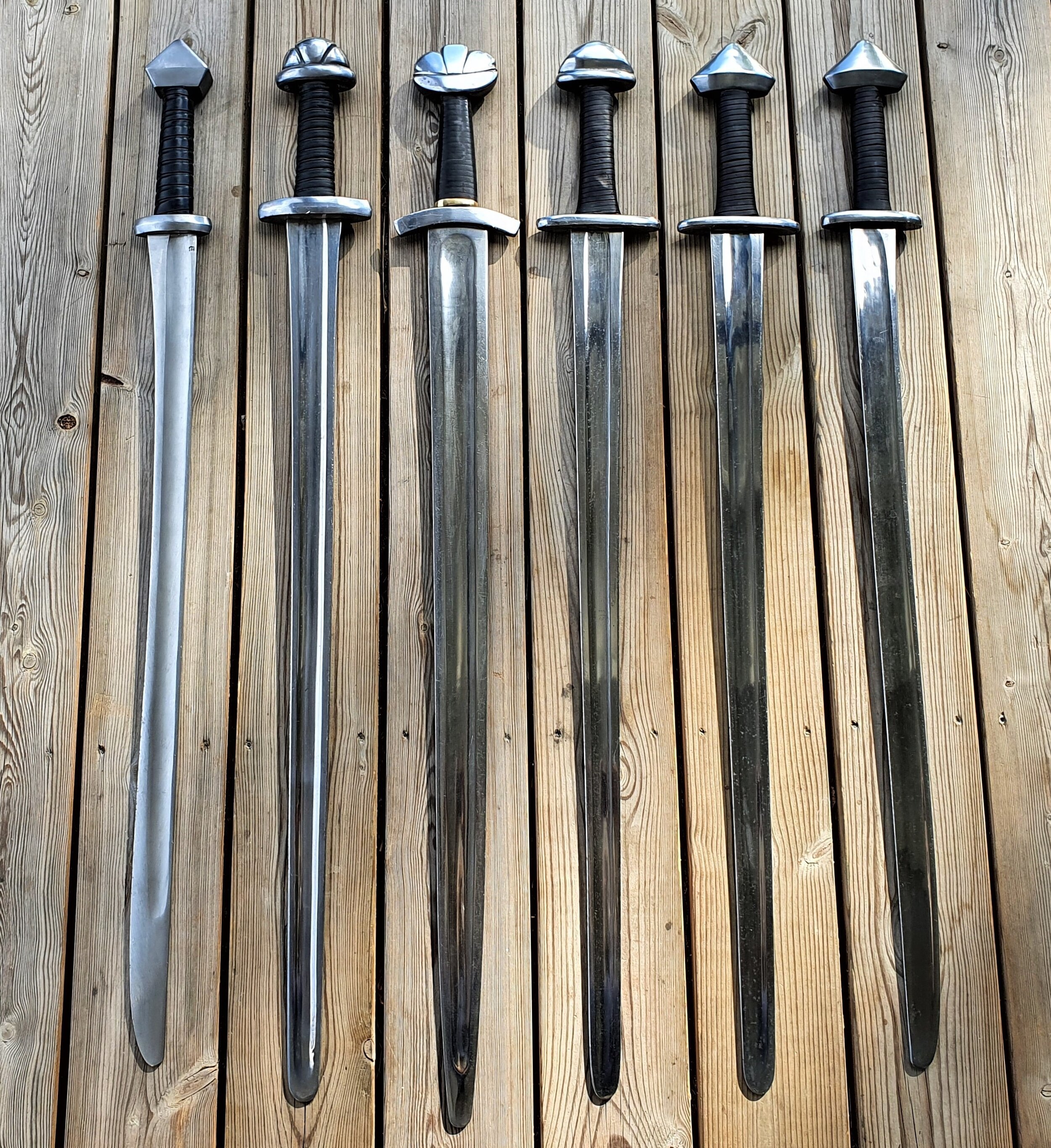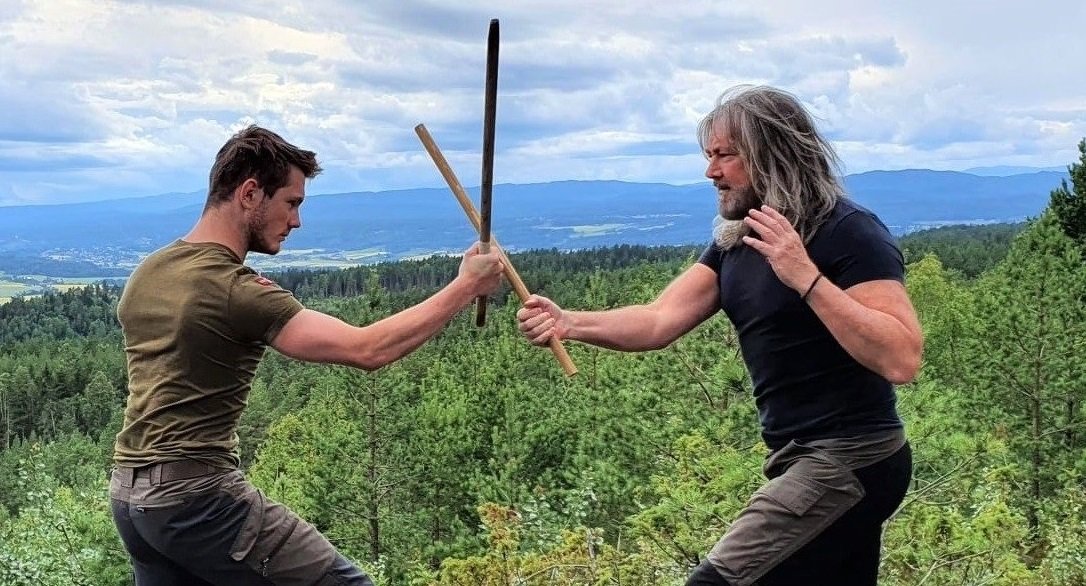The Academy of Viking Martial Arts does not glamorize weapon use, but we do teach techniques to defend against, disarm and use weapons in life threatening situations.
If you ever find yourself in being attacked by someone with a weapon, the best thing to do is to get away from such a situation as fast as possible. If you can't run away, or believe that you must defend yourself and others, what then? In this situation, self-defense techniques are needed.
Hopefully, you will never be attacked or end up in such a dangerous situation, but there is violent crime in the world and attacks with weapons happen. If you are serious about learning self defense skills, join a reputable martial arts school and start training.
STICK FIGHTING by Tyr Neilsen
/Viking warriors were known for their fierce armed and unarmed combat skills. Their brutal and effective battlefield wrestling techniques, made them feared and respected by their enemies, in equal measure.
Viking battlefield wrestling evolved from the necessity to defend oneself when a weapon was lost or broken during combat. It was a vital skill that every warrior needed to know.
Each warrior understood that they could still have an advantage if they held a piece of a broken weapon, such as an axe handle, and combat techniques with axe handle or stick are devastating.
During the Viking Age, weapons made of steel were expensive and relatively rare, but all Norse hunters and farmers carried an axe, and even the poorest Northman had access to a stick.
The ability to improvise and adapt to the situation was critical to the Vikings' success in battle. In combat, every object around the warrior was a potential weapon, and Vikings needed to know how to make use of everything in their surroundings.
Viking battlefield wrestling was not just physical skill, but also a mindset, enabling warriors to be resourceful in combat, and turn a simple stick into a dangerous weapon.
In the hands of a skilled martial artist, a simple stick can be transformed into a versatile weapon, and there are techniques that can be done with a stick, such as locks, chokes and takedowns, that can’t be done with cutting weapons.
There's no standard size stick in Combat Laustak. We train with different sized sticks, which develops adaptability, enabling a Combat Laustak practitioner the ability to adjust to changing situations.
Combat Laustak stick techniques are simple, direct, and powerful. A primary goal is to hit an opponents weapon hand so they can no longer weild a weapon. Other goals include disarming and disabling.
Combat Laustak single stick techniques include using both hands on the stick, and these two-handed techniques implemented against opponent’s wrist, forearm, arm, neck, or head, are devastating.
Viking warriors needed to be quick-witted in combat, just as we do today. With the right training and mindset, even the simplest of objects can become a powerful weapon in your arsenal
Stick fighting is an integral part of Combat Laustak, and once the basic principles are taken in, they can be used for any cutting weapon.
CUSTOMIZING TRAINING by Tyr Neilsen
/Martial artists are always looking for ways to improve their training and enhance techniques. One often overlooked aspect of training is the equipment we use. While standard training equipment is certainly effective, customizing your equipment can reenergize your workouts and add an element of authenticity to your weapon techniques.
One of the biggest advantages of customizing your training equipment is the ability to replicate the size and shape of real weapons. Standard equipment is great for training weapon techniques, but it doesn't always accurately reflect the size and shape of the modern weapons you want to be able to handle.
By customizing your training equipment, you can create a more authentic training experience and better prepare yourself for real-life situations.
Cold Steel War Hawk steel axe and customized Cold Steel Trench Hawk Trainer - SOG Tactical Tomahawk and customized Cold Steel Trench Hawk Trainer - gransfors bruks wildlife hatchet and customized training Hatchet
A big advantage of customizing your training equipment is that it can breath new life into your workouts. If you've been training for a while, it's easy to fall into a rut and lose motivation.
Customizing your equipment can help to break up the monotony and keep things interesting. It can also help you to focus on specific techniques and areas of your training that need improvement.
Customizing your training equipment doesn’t necessarily require a lot of effort, skill or time. The basics can be done pretty quickly and are something that most people can do.
Basic polymer training axe with haft cut to length of woodsmans hatchet
So, how can you go about customizing your training equipment? One option is to create your own custom equipment from materials such as rubber, polymer or aluminum. If you're not sure where to start, there are plenty of resources online that can help you get started.
An easier way is to modify existing training equipment. Pre-made standard equipment sold by reputable suppliers are often of high quality and can save you a lot of time and effort.
For example, by simply cutting the length of a pre-made training axe handle, the change of weight, balance and speed of the axe, can make a dramatic change to your training.
Shaping a training axe to the similiar dimensions of a modern axe requires a little more work and skill, but if you're willing to put in the time and effort, results can be truly impressive.
A Cold Steel Trench Hawk Trainer is cut and shaped to similiar dimensions as the SOG Tactical Tomahawk
It’s smart to have standard equipment to train weapon techniques in relative safety, it’s even better when the training equipment is very close to the size and shape of the real thing.
Customizing standard axe trainers has made weapon training so much more fun, and anyone who trains with axes will appreciate the major difference in speed and accuracy that customizing their training axe provides. I certainly do.
Train safe.
KNIFE TRAINING by Tyr Neilsen
/It’s nice to have a good knife. It’s even nicer to be able to use a knife, or have the skill to defend against a knife attack. Lots of practice is needed in order to be good at a technique, and practice is what it takes to develop speed and accuracy with a knife. To this end, training knives are a vital part of a martial artists equipment.
Rubber, wooden and aluminum training knives are the foremost types of training knives used to safely practice weapon techniques and self-defense against knife attacks. Although a solid hit, thrust or slash with any one of these types of training knife can be painful, they are relatively safe, and allow martial artists to try techniques without getting hurt.
Training knives are shaped in a variety of styles and sizes, but the main types of training knives are based on the Bowie knife, Ka-Bar knife, Tanto knife, dagger and folding knife. (The first five Academy articles about modern weapons cover these specific types of knives). The Bowie, Ka-Bar and Tanto training knives are good training substitutes for different types of Viking seaxes, and the smaller training knives are good substitutes for the basic small Viking knife.
(FROM LEFT TO RIGHT) COLD STEEL RUBBER TRAINING LAREDO BOWIE, LEATHERNECK - SF, PEACE KEEPER I, RECON TANTO, HARDWOOD TANTO, ALUMINUM TRAINING KNIFE.
Although most training knives can be used to develop knife skills, it is smart to think about what type of training knife fits your needs. There are subtle differences in the size and weight of rubber, wood, polymer and aluminum training knives, and even though the tip and blade edges of training knives are blunt, there are differences between training knife cutting edges. These factors are worth taking into account when purchasing and training with a training knife.
Practicing unarmed self-defense techniques against a knife, means the training partner who is doing the ‘attacking’, becomes steadily more skilled with a knife. Technique training using a training knife means that you are relatively safe as you develop coordination, balance, muscle memory and footwork. Hand-eye coordination speeds up. Reaction time is shortened. Consciousness of the situation and how you move within it is heightened. Focus is sharpened and your capabilities and confidence are enhanced.
Getting out of the way of the attacker’s weapon is a constant priority, and footwork and moving in balance are probably the skills that benefit most from working with training knives. As soon as you find your training partner has a knife in their hand (even though it is made of rubber or plastic) a sense of real danger pervades the training. At a deep level you know that if you perform a technique badly you will be cut, and if this happens when defending against a sharp steel blade, the consequences could be serious.
Practicing regularly with a training knife keeps students aware of the chaos that is a weapon attack, whilst keeping them relatively safe. Training in such chaos situations keeps the student aware, tunes the reflexes and body coordination, and solidifies the stance and footwork.
Training in a ‘closed’ area forces students to be aware of the other people training. In this situation students become increasingly aware of other students and ‘weapons’ around them. This spacial awareness helps students make sure they don’t stumble over other students or get hit by them. Safe training like this helps students keep focus on their goals amid the chaos of an attack with a weapon.
ALWAYS TRAIN SAFE
It is advised that the intensity of knife technique training increases only in accordance with your capabilities. Understanding why you move in a certain way leads to perfecting technique. No one ever really knows if they are prepared for a situation until that situation happens, but the only way to being prepared for such a situation is by practicing in relative safety. There is nothing to gain by training so hard or unsafe with a partner that one or both are maimed or seriously injured.
Practicing with training knives of different types and sizes provides more options and enhances the ability to fluidly go from one type of knife to another. It is always helpful to remind yourself and your training opponent how it feels to be hit or cut , by using the training knife to lighty 'stick', stab’ or 'cut' the body, without doing any damage.
It is of the utmost importance to train safely and avoid injury, allowing you to continue perfecting techniques. Being able to return without injury and with greater eagerness is incredibly important.
ALUMINUM TRAINING KNIFE CAN BE USED FOR PRACTICING WITH SIMILIAR SIZED KNIVES, SUCH AS THE FOLDING KNIFE.
WARNING:
It is of the utmost importance to understand and remember that working safely with training knives is very different than using or defending against a real knife with a sharp edge. Although working with a training knife helps understanding and performance of defense techniques, facing a live blade will create a different mindset. No matter how clever you are with a training knife, fear, sweaty hands and stiffness of movement can suddenly take over in a real situation.
Not all maneuvers and disarms that have been practiced to perfection in a totally safe environment, with blunt weapons and protective padding, are effective when faced with an attacker who is intent on harming you. No longer is the person you are facing ‘letting’ you defend and disarm, but is forcefully changing the dynamics of the encounter by resisting any trapping or disarm techniques.
After becoming proficient in the use of training knives, some martial artists use sharp steel knives for advanced technique training to prepare for encounters with armed attackers. This is absolutely not recommended for beginners, and should only be done by consenting experienced training partners.
RUBBER COLD STEEL LEATHERNECK-SF TRAINING KNIFE AND POLYPROPYLENE TRAINING KNIFE (LEFT) BASED ON real USMC KA-BAR KNIFE STYLE AND LEATHERNECK-SF (RIGHT)
NOTE:
If a person finds themselves in a situation where a knife is being used as a weapon, and that person doesn't know how to defend themselves, it is more likely that that person is going to end up in hospital or worse.
Enrolling in self-defense courses with classes and one-on-one training to learn how to use and defend against a knife, can be a good life investment, even if all you get out of such a class is situational awareness.
WEAPON MAINTENANCE by Tyr Neilsen
/As martial artists, we know that maintaining our weapons is important, in the same way physical training is. Without regular care and attention, techniques and weapons get rusty.
When you have invested in a good Viking sword, making sure that the steel doesn’t get rusty will ensure that it remains in top condition for years to come.
Not all steel is of the same quality, but all steel needs regular maintenance.
The Viking sword was a symbol of strength and status in the Viking Age. Today, as then, anyone working with such weapons, wants them crafted with precision and skill, using the finest materials available. For weapons that are used for training, demonstrations and combat, regular maintenance is a necessity for optimum performance.
Poorly maintained equipment can cause instability and eventually equipment failure. Without regular maintenance, replacing equipment becomes a costly process. The cost of regular maintenance is small compared to the cost of replacement.
The time used on maintenance may feel like a hindrance, but it is nothing compared to downtime and stress caused by problematic equipment.
Before maintenance work
The main purpose of regular maintenance is to ensure that equipment is operating at 100% efficiency at all times, but a priority of time and effort on maintenance, rather than repair, is not only good for the equipment, it’s also good for the person performing the maintainance.
Maintainance work instills dicipline, pride in ourselves and our work, and a greater feeling of ownership. Maintenance work builds competence, confidence and readiness, it heightens our standards, and gives us the opportunity to take responsibility for the standard of the equipment and ourselves.
After maintenance work
There are a few simple and key steps that need to be followed:
Cleaning
After each use, it's essential to clean the Viking sword. Wipe the blade down with a clean, dry cloth to remove any debris or moisture.
If there is any dirt or grime on the blade, use a soft-bristled brush to gently remove it. Never use harsh chemicals or abrasive cleaners, as these can damage the blade and hilt.
Cleaned, polished, oiled and ready for use.
